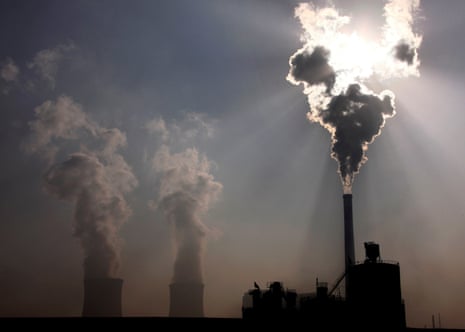This week Canada joined the growing list of major developed countries saying they will phase out coal power.
The announcement comes against the backdrop of global demand for coal falling last year for the first time in nearly two decades, a development that could presage a new era of lower-carbon energy generation – or merely a blip in the long-term dominance of the highly polluting fuel.
The reversal of the upward trend in demand for coal marked “an inflexion point” for the world economy, according to the International Energy Agency (IEA), the gold standard for energy data. Since the 1990s, coal use soared in tandem with the rapidly developing economies of Asia, chiefly China and to a lesser extent India. By 2015, coal was taking a 41% share of global electricity generation.
While coal companies enjoyed a renaissance, the world suffered from the higher greenhouse gas emissions that resulted, and from shockingly poor air quality in many major cities.
These factors, combined with the seemingly unstoppable rise of natural gas that has followed the fracking revolution, have led to coal being at its current crossroads.
An increasing number of developed countries have moved to regulate, penalise and begin to phase out coal-fired power generation. In the UK, the government has pledged to phase out coal by 2025. France, the Netherlands, Austria, Denmark and Germany have similar plans, with differing timescales.
In the US, regulation has been slower to come but the economics of coal have changed markedly. Thanks to low natural gas prices as a result of the fracking revolution, for the first time in history as much US electricity was generated from gas last year as from coal.
By 2030, under Canada’s plans, there will be no more coal-fired power generation in the country, with the gap to be filled by renewable or other “sustainable” forms of power. Kathleen McKenna, environment minister, said: “Taking traditional coal power out of our energy mix and replacing it with cleaner technologies will significantly reduce our greenhouse gas emissions, improve health and benefit generations to come.”
China is where the changing fortunes of coal can be most clearly seen. According to the IEA, demand for coal stalled there in 2014, and according to some estimates fell by 3% last year. The faltering of China’s phenomenal growth rates has been one reason, but government policy has also played a major role, spurring investment in renewables and cutting down on the dirtiest coal to try to tackle some of the worst pollution.
China is still unusual, however. Most of the world’s less industrialised economies, particularly those in Asia, are planning to increase their dependence on coal rather than follow Beijing’s lead.
This risks opening up a split whereby developed countries close down their most polluting fossil fuel assets, while developing countries continue to open them up. In the IEA’s projections, global coal demand is seen as likely to rebound to 2014 levels by as soon as the end of this decade, driven by growth in India and south-east Asia. This could be enough to more than offset declining demand in Europe, north America and China.
What will make the difference is whether governments adhere to the promises made in the Paris agreement to limit global warming, and whether investment is available for poorer countries to move away from the most polluting fuels.
Simon Bullock, a climate campaigner at Friends of the Earth said: “Like going straight to mobile without bothering with landlines, developing countries can bypass dirty coal and gas and go straight to renewables.
“The main stumbling block remains the upfront investment and technology. For coal the only real costs are a person with a shovel. That’s why we need a global renewable energy fund, to help developing countries leapfrog coal and go straight to renewables.”
Despite the problems coal causes, in climate change and air pollution, the World Coal Association sees a strong future for the fuel, in both the developing and developed world. Its chief executive, Benjamin Sporton,said: “Developed countries will continue to use coal for decades to come, and developing countries will increase [their use]. There are new high-efficiency technologies that reduce emissions, and developments in carbon capture and storage. Coal is a reliable fuel.”
One of the most scrutinised markets for coal in the next few years will be the US, where president-elect Donald Trump has repeatedly vowed to revive the fortunes of the coal industry.
However, he may be fighting against economic reality. Fatih Birol, the executive director of the IEA, said: “Coal is losing ground because it is losing competitiveness. In the US gas is cheaper than coal. Gas will be a very economic option [for decades] unless there are new government policies and new fiscal measures to change the balance.”
Such measures would be expensive, and paid for by consumers and taxpayers. Changing economics, led by fracking, may yet prevent the US from returning to the old days of King Coal.

Comments (…)
Sign in or create your Guardian account to join the discussion